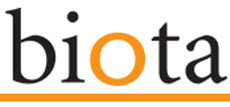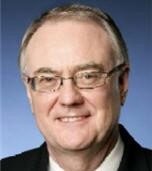Biota Holdings Limited (BTA)
CEO on FY10 Results
18 August 2010 - CEO: Peter Cook
In this Open Briefing®, Biota CEO Peter Cook discusses: Cash in hand of over $100 million as at 30 June 2010; Two programs at registration/late clinical stage; Comfortable with strength of current development portfolio
Interview Transcript
openbriefing.com
Biota Holdings Limited today reported NPAT of $16.2 million for the year ended June 2010, down from $38.2 million in the previous year, which included receipt of a $20.0 million litigation settlement. Relenza royalty income rose to $63.7 million from $45.0 million, with most of the income booked in the first half, a reversal of the royalty flow in 2009. What visibility do you have in relation to Relenza royalties in the current year ending June 2011 and their timing?
CEO Peter Cook
Relenza royalties depend on the impact of influenza on the community, whether in its seasonal or pandemic form, and forecasting that remains reasonably elusive. Our solution is to provide quarterly updates, which we believe are the most effective way of giving investors insight into ongoing Relenza royalty flows.
It’s worth highlighting that our recent Relenza royalties have reflected demand resulting from the swine flu pandemic that got under way in the second quarter of calendar 2009. Relenza demand was at its highest levels through the second half of our 2009 financial year and the first half of our 2010 year.
For us, one of the good things to come out of the swine flu episode was that our Relenza licensee GlaxoSmithKline (GSK) has increased its production capacity. That should enable GSK to respond more rapidly to future market needs.
openbriefing.com
As at 30 June 2010 cash totalled $104.9 million, up from $86.7 million a year earlier, in spite of a capital return of $20.0 million to shareholders in December 2009. You’ve stated that “the retention of high cash balances protects the company’s development programs from the volatility in royalty income.” What do you see as the appropriate level of cash holdings, and what scope is there for further returns of funds to shareholders?
CEO Peter Cook
We think our current cash backing of over $100 million is appropriate given the current capital market environment, the likelihood of Relenza demand retreating from pandemic levels, and given our intention to spend some $25 million on a human rhinovirus (HRV) study in asthmatics over a two year period.
As a general rule, we’d see ourselves needing somewhere between one to three years of expenditure cover, depending on the capital environment and our particular circumstances. Given the uncertainties in the current environment, we think it’s prudent to retain cash at the upper end of that target range.
On the matter of returning funds to shareholders, there are a number of considerations. Our local shareholders want dividends only if they’re franked. They would prefer to see money committed into our programs rather than be returned as unfranked dividends. Our offshore shareholders prefer to see capital growth, and they tend to see dividends as reducing the funds available for the development of our pipeline.
Our directors have indicated that a dividend would be considered after the first six months of trading and after the payment of company tax in February, which will define the franking credits available to shareholders.
openbriefing.com
Biota’s reported expenses totalled $51.2 million in 2010, up from $41.5 million in the previous year. The increase was driven primarily by a rise in R&D expenses to $21.7 million from $13.3 million, reflecting spending on your newly acquired antibacterial programs. What is the outlook for costs given development plans over the course of the current year?
CEO Peter Cook
I’ve touched on one of our most significant upcoming costs: the planned $25 million expenditure on our HRV program over two years, a substantial portion of which will fall in the current financial year. Spending on that scale, on a major clinical trial, only happens every two or three years, so it will be significant in 2011. Partly offsetting that spending will be a reduction in R&D.
We have always had the ability to flex some of the spend on earlier research programs, to match the overall spend, particularly in a year where there is major investment in a clinical program.
openbriefing.com
In 2010 Biota amortised $8.8 million of the antibacterial programs acquired during the year from Prolysis Limited in the UK and MaxThera, Inc in the US. This compares with a total purchase consideration for the assets of $12.5 million. What was the rationale for amortising the bulk of the intellectual property acquired within the first year of acquisition?
CEO Peter Cook
We amortise expenditure over the time interval to the next significant project milestone, a precedent established with our auditors on the programs we’ve licensed out. In those programs, we’re paid money but the receipt of that money isn’t taken up in the year in which it occurs; it has to be amortised over the period to the next milestone.
The amortisation of the Prolysis and MaxThera IP was relatively short: the subsequent milestone or milestones were not too distant.
openbriefing.com
What is the likely time line for developing a product ready for clinical testing from the new antibacterial programs?
CEO Peter Cook
I’d be speculating because although we know what the next steps are, it’s the results from those steps that will define the steps that need to be taken at the next turn, and so on. However, the industry average to get from discovery to Phase I, which is in-human trial in the clinic, is about five years. And it takes about one and a half years from pre-clinical candidate stage to Phase I. The projects running in MaxThera and Prolysis range from discovery to pre-clinical, so those are the likely ranges in the time line.
openbriefing.com
Biota’s reported income tax for 2010 was $4.0 million, and you’ve provided for a tax payment of $3.7 million. What assumptions is this provisioning based on? When might Biota’s unrecognised tax losses of $31.5 million be brought to account?
CEO Peter Cook
The $4.0 million relates to our tax expense on the revenue as reported. Some of that reported revenue was not in cash, the biggest item being two months of forecast Relenza revenue given our revenue and profit year and our tax year don’t exactly align. That revenue hasn’t been confirmed and we haven’t been paid. So the $3.7 million provision is for payment based on actual cash receipts.
The $31.5 million of unrecognised tax losses you’ve mentioned comprise $17.5 million in Australia, recoverable at a 53.8 percent fraction from future Australian profit, plus $13.9 million in the UK. The UK losses are only recoverable against UK profits. One factor that makes it difficult to define when the losses can be brought to account is the fraction at which the losses are recoverable, which is dictated by the application at each balance date of continuity of business and continuity of ownership tests.
I should also point out that in 2010 we recovered a significant $22 million of tax losses.
openbriefing.com
Biota has indicated it has commenced the Phase IIb clinical trial of its HRV antiviral BTA798 in asthma patients in the US. What was behind the decision to test the drug in the US? Given the expected trial cost of $25 million over two years, will further grant income be available to support the program?
CEO Peter Cook
We’ve located the trial in the US because we needed access to a significant number of researchers and clinics to get to a sufficient number of patients. We also needed a fairly wide geographic spread to minimise local demographic effects and a credible regulatory environment to support future potential licensing interest from partners. The US was the most optimal location in those terms.
We wouldn’t rule out the prospect of further grant income to undertake the studies, but given it would be subject to government discretionary expenditure, we feel we shouldn't be banking on it in the current environment.
openbriefing.com
Biota’s partner Daiichi Sankyo filed a new drug application (NDA) in Japan for Laninamivir (CS-8958) in February after successful completion of Phase III clinical trials in Asia. Do you have any indication of the progress of the application and the likely start of royalty income flow?
CEO Peter Cook
We filed in February and the official Japanese NDA guidelines require the authorities to have up to 12 months to consider the application. We’ve been notified that the second committee of review has recommended approval for Laninamivir to the Department of Health, which is the second last stage in the approval process. So it would appear we’re tracking reasonably well to the 12 month timetable.
Royalties will be paid on all sales of Laninamivir and we’d expect those to start flowing in the first flu season after the drug gets approved.
openbriefing.com
What progress have you made toward securing a licensee for Laninamivir outside Japan? Will Biota continue to independently progress the clinical trials necessary for approval in other markets while seeking a licensee?
CEO Peter Cook
The last of the National Institutes of Health funded Western studies were completed during the 2010 financial year. We see that milestone, as well as the filing of the JNDA, as pretty good overall progress.
Rest of the world licensing activity is underway, although governments’ cancellation of vaccine orders post the swine flu pandemic – and I've got to stress that Laninamivir is not a vaccine – hasn't created a particularly good negotiating environment for us. The cancellation of those orders has made some of the big pharmaceutical companies wary of dealing with governments under these conditions again, and those sentiments will remain for the near term.
Despite this temporary issue, both we and co-owner Daiichi-Sankyo see Laninamivir as a very valuable product for our shareholders. In fact, Daiichi-Sankyo is making a very large investment in Laninamivir in taking it to market. We remain focused on crystallising the best value we can in the shortest possible time frame.
openbriefing.com
You’ve indicated that the acquisition of the Prolysis and MaxThera antibacterial research assets has strengthened and broadened your drug development pipeline. What is your level of comfort with the current pipeline? Do you see any areas of relative weakness where you might seek to acquire new IP?
CEO Peter Cook
We spent a lot of time in the 2010 financial year working out where we had some gaps in the pipeline and what we needed to do to correct that. The Prolysis and MaxThera assets serve that purpose well and as we stand today, we have a very high level of comfort in our current pipeline.
We’ve got Laninamivir and HRV in registration or late-stage clinical trial. Our respiratory syncytial virus (RSV) program is not far behind, and we’ve got a deeper list of pre-clinical candidates than almost anybody else in the industry.
However it has to be recognised that the pipeline is dynamic, and we keep it under close review. We’re constantly reviewing how our projects are tracking and running “what if” scenarios on whether on not they get to the next critical value inflection point.
We’re constantly looking at all the opportunities to maximise our portfolio value, consistent with our available resources, and deliver value to shareholders.
openbriefing.com
Thank you Peter.
Latest Open Briefings 
22 Aug 2012
CEO on FY2012 Result
20 Aug 2012
CEO on Nabi Merger
29 Nov 2011
Annual General Meeting 2011
18 Aug 2011
CEO on FY Results, BARDA Contract
16 Feb 2011
CEO on Outlook, LANI Potential






